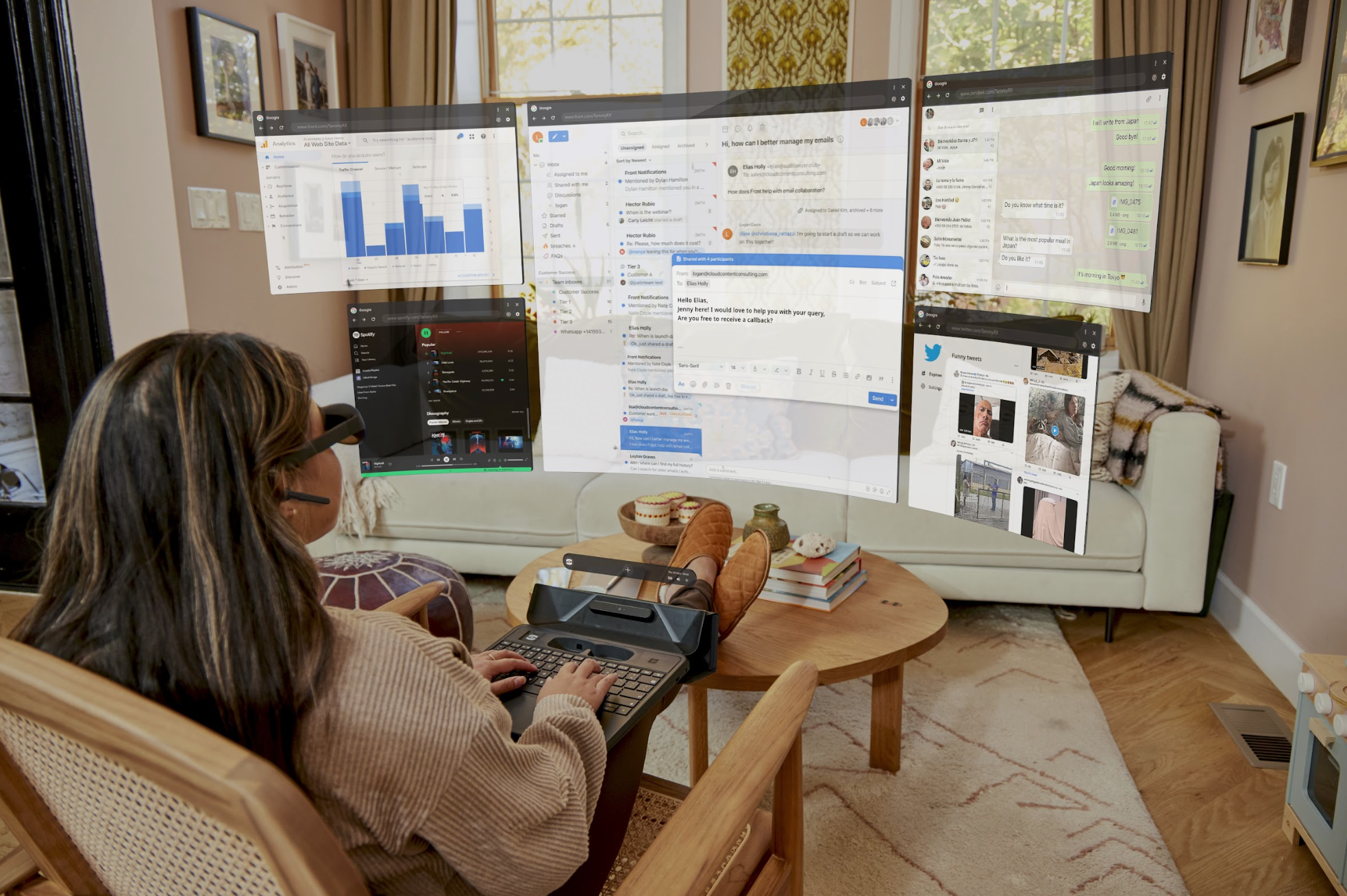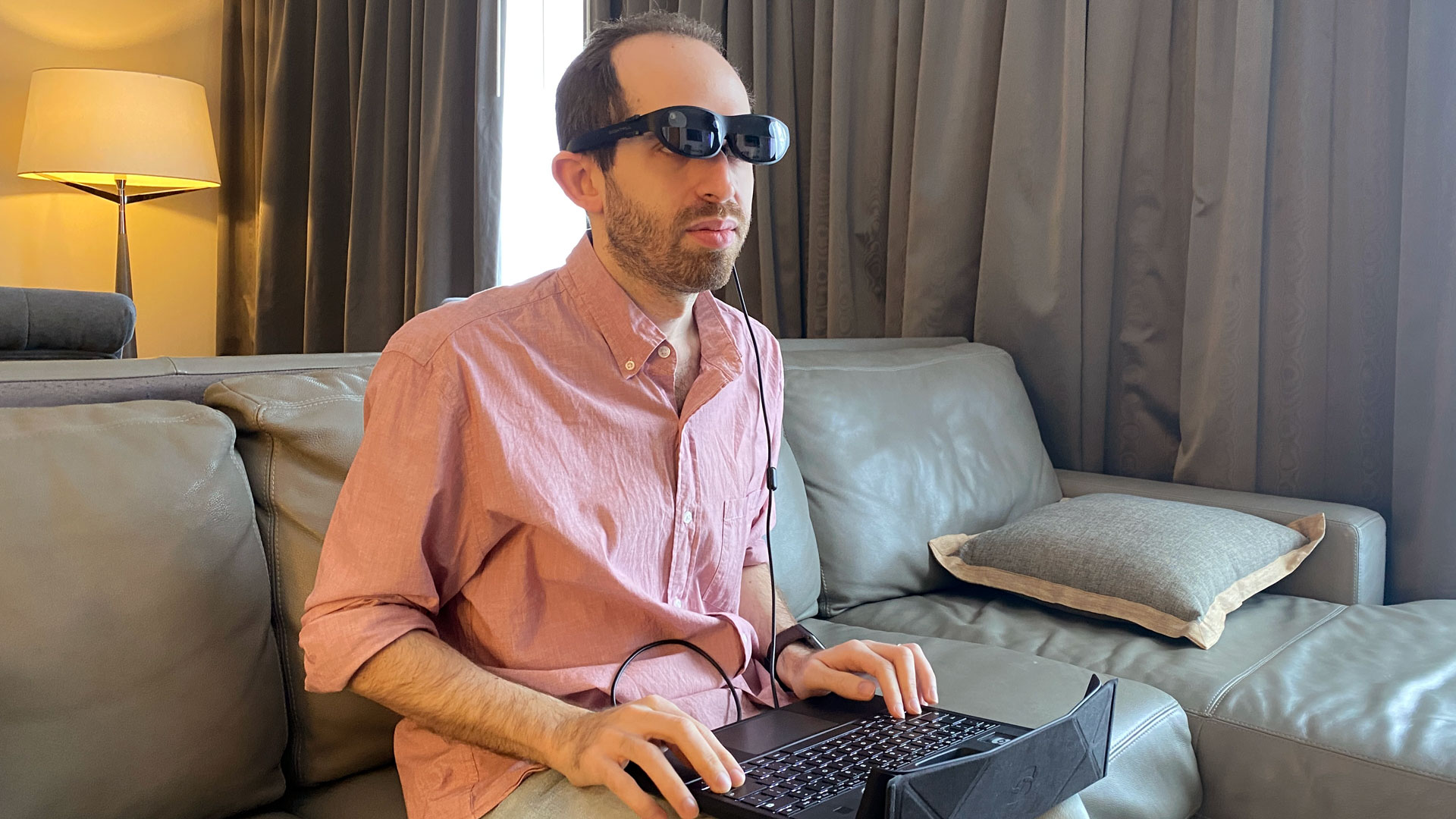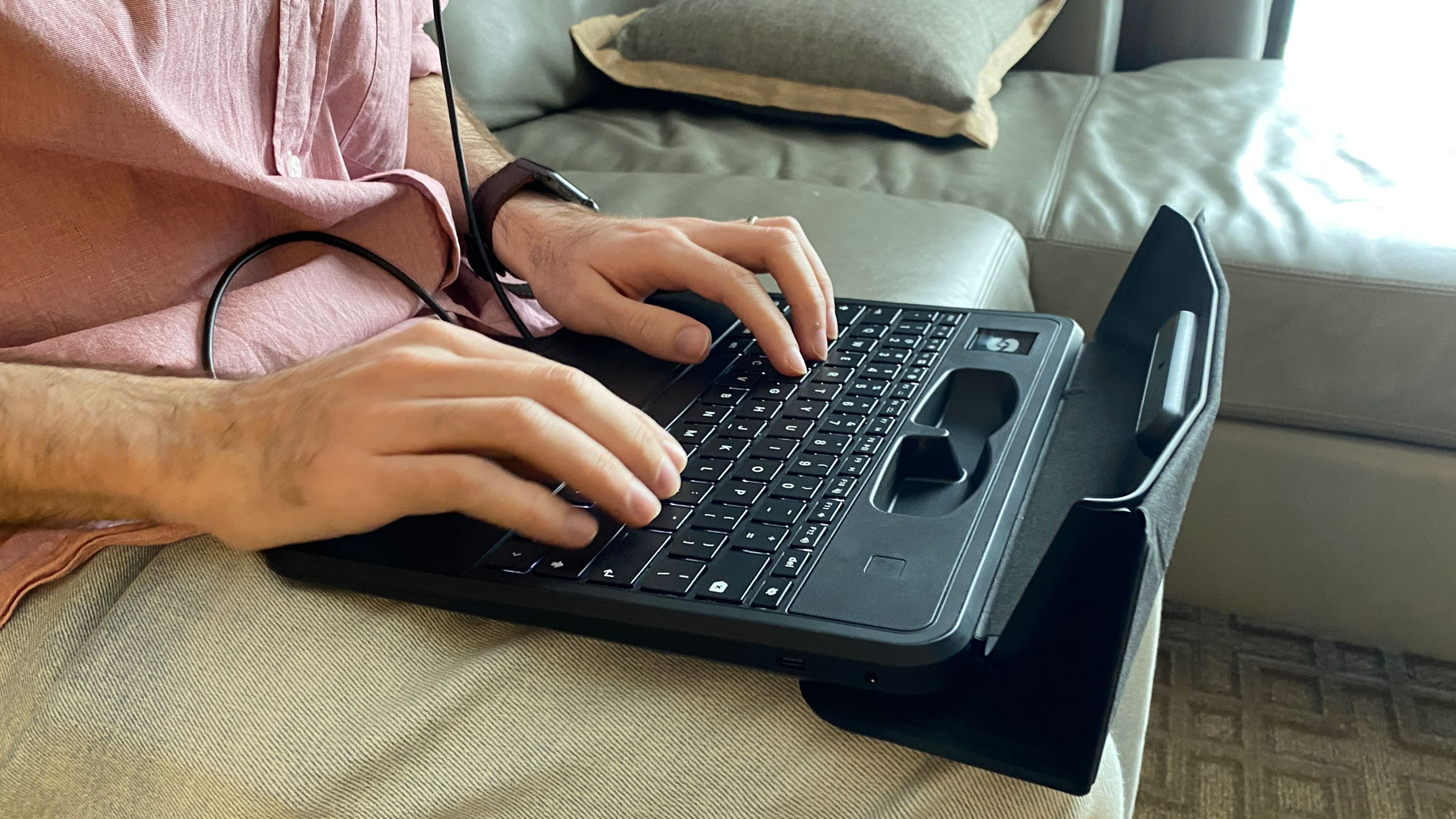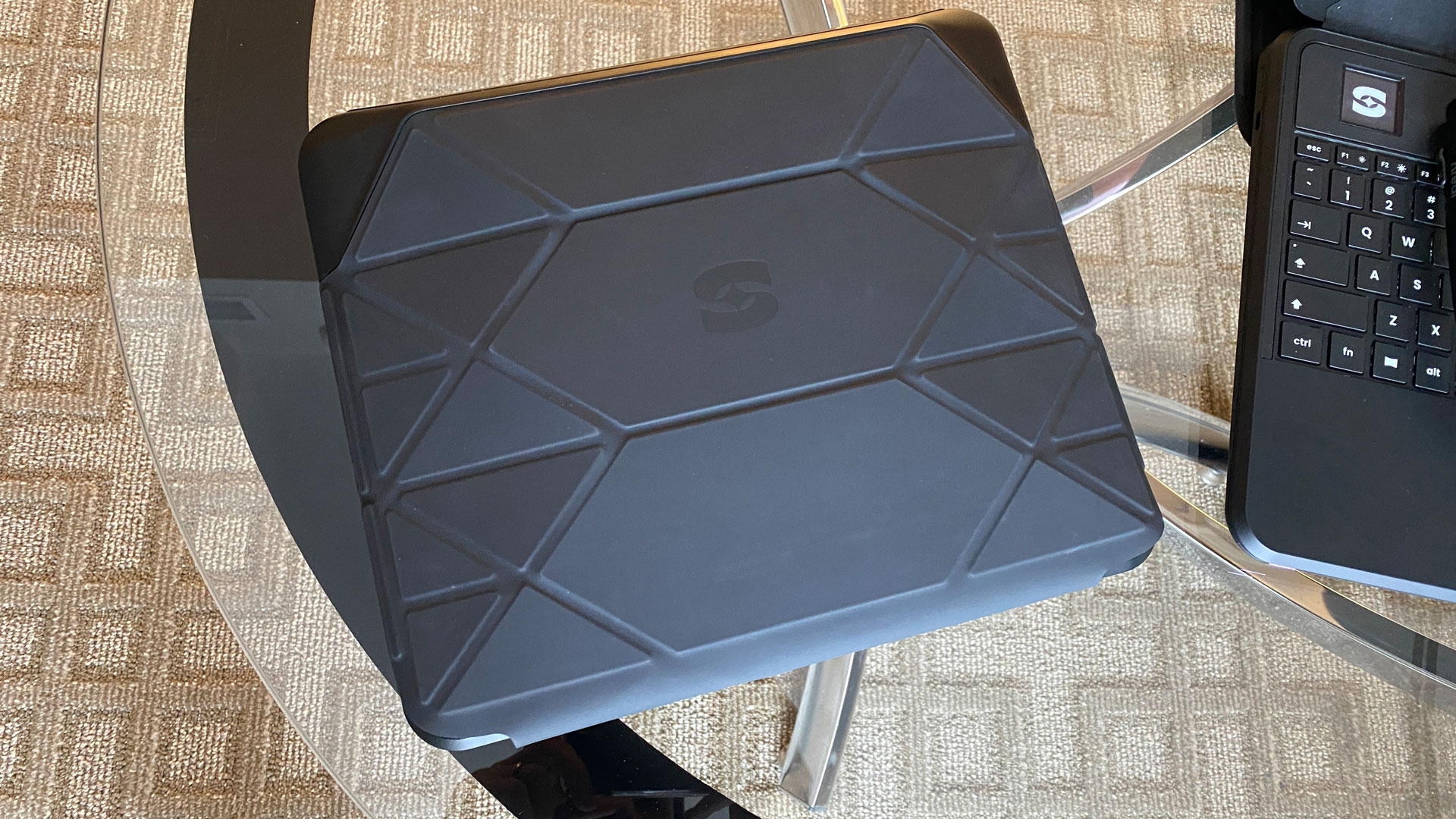This AR Laptop Promises a 100-inch Virtual Screen, But Limits You to Web Apps
Sightful's Spacetop is available for early access purchasing.
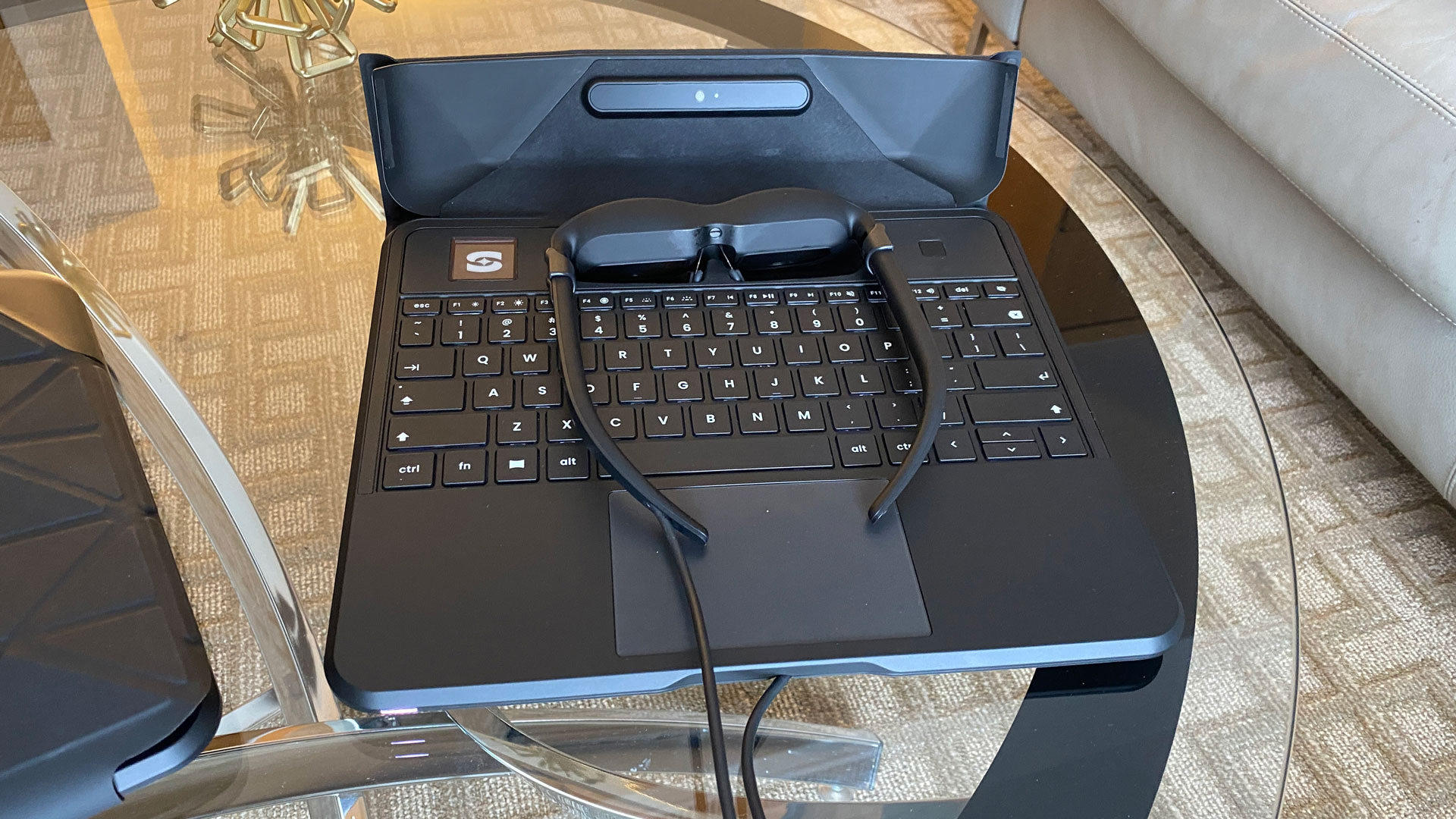
Outside of foldables and 2-in-1s, the basic concept of a laptop hasn't changed much over the last few decades. Your standard clamshell has a keyboard and a screen and it folds into a book shape. Sightful, a Tel Aviv-based startup with $61 million in venture funding, is looking to change that with its first product, the Spacetop.
While it still uses the clamshell form, when you open the Spacetop, there's a pair of AR glasses waiting for you (these are a customized version of the Nreal Light) instead of traditional screen. Spacetop claims this puts a 100-inch screen at your disposal, but the reality is slightly more complicated.
| CPU | Qualcomm Snapdragon 865 - Kryo 585 8-cores, up to 3.1 GHz |
| Graphics | Adreno 650 |
| Memory | 8GB |
| Storage | 256GB |
| Battery Life | About 5 hours (claimed) |
| Ports | 2x USB Type-C (3.0) |
| Networking | Wi-Fi 6, 5G (Sub-6), Bluetooth 5.1 |
| Webcam | 5MP, 2560 x 1920 |
| Operating System | Spacetop OS (Android Open Source Project) |
| Dimensions | 10.47 x 9.8 x 1.57 inches (266 x 249 x 40 mm) |
| Weight | 3.3 pounds (1.5 kg) |
| Price | $2,000 (early access) |
To start, Sightful founders Tamir Berliner and Tomer Kahan (formerly of Magic Leap) told me that while the Spacetop is ready to start shipping today, you have to apply for early access. The company wants people who they think can use this the way envisioned — using lots of windows, largely web apps — trying the Spacetop first. People who need more powerful hardware, like gamers, will be asked to wait. Once an applicant is approved, they will pay $2,000 for their hardware. Yes, you need to be approved at this point for them to take your money.
The keyboard and touchpad feel like they belong to a laptop (they're produced by laptop manufacturer Wistron). But in the demo units I tried, the keyboards felt a bit loose. There are two USB Type-C ports on the side of the laptop, which can be used for peripherals or to attach a physical display. There's also a very small e-ink display on the unit, though Sightful was only using it to show off its logo.
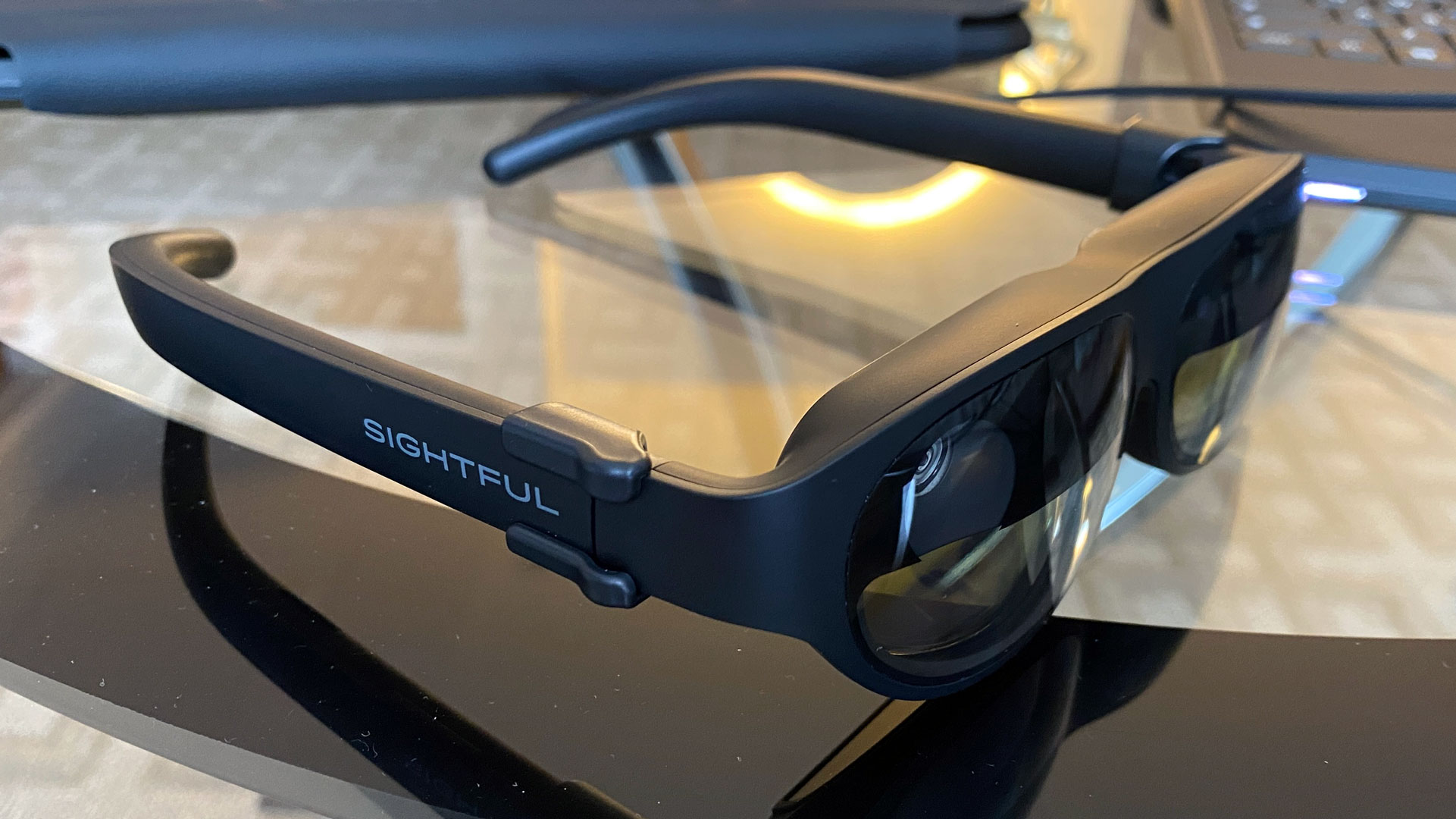

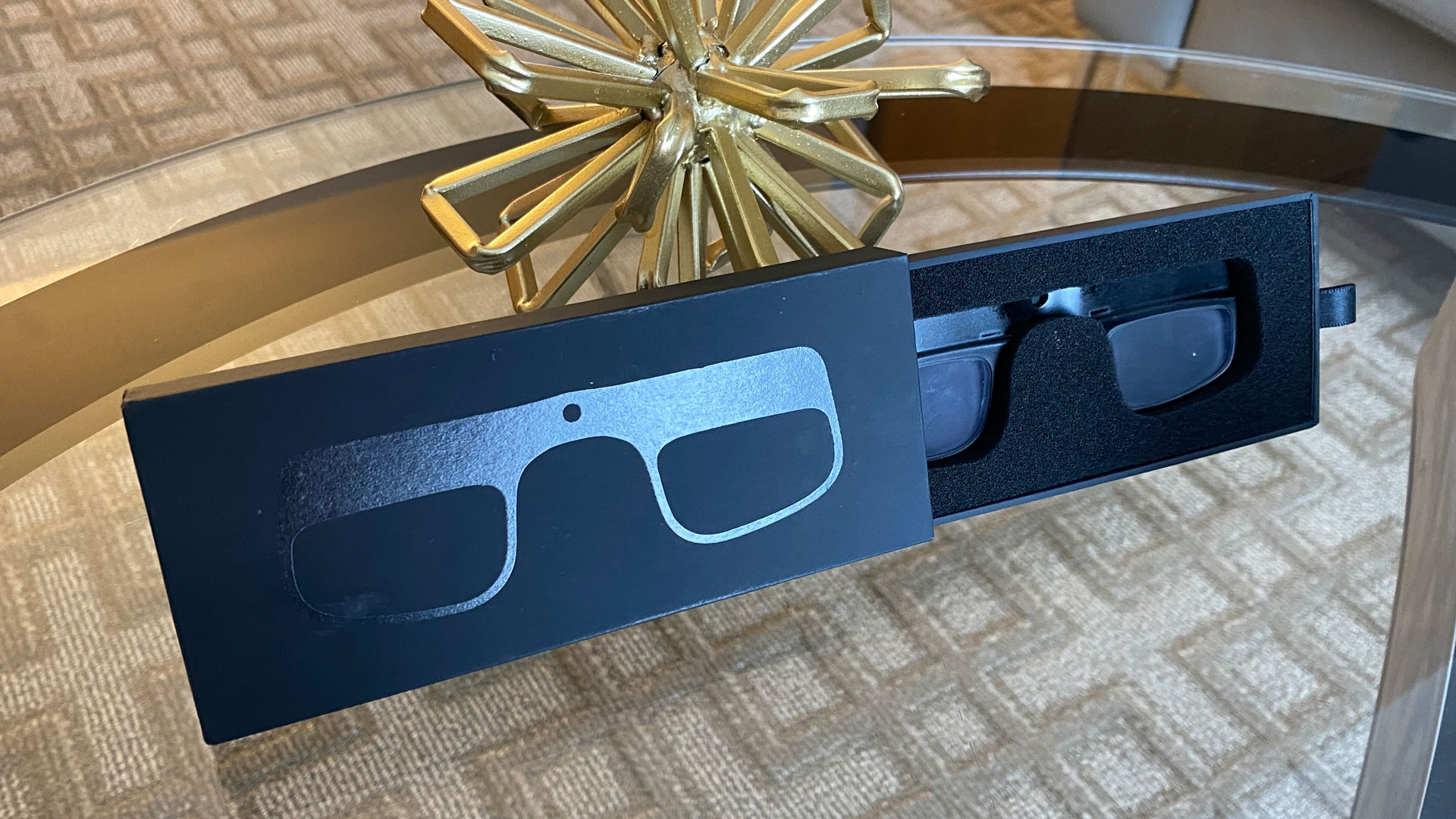
The big draw, of course, is the headset. It's a customized version of the Nreal Light, which has 1080p lenses for each eye, integrated speakers and, according to our own review, offered "excellent build quality." I found that the images on the glasses looked great, with sharp text and decent color. The founders tell me their customizations include software changes to make text sharper, as well as hardware modifications (the cable, for instance, no longer goes around the back of your head, which could be a pain for people with long hair). The AR glasses are permanently tethered to the laptop. So If these things break or the cable gets damaged, you won't have a screen at all unless you plug it into a monitor. I wish Sightful had considered attaching the glasses via USB Type-C.
When you're wearing the glasses, you won't be greeted with Windows 11 or a familiar Linux distro. Sightful's "Spacetop OS" is built on top of the Android Open Source Project (AOSP), and, at the moment, it’s pretty limited. With each of the Spacetop units I tried, I was greeted with different window layouts: a calendar here, a document there, a chat app in the corner, a web page in the center. You can have social media posts in a long vertical column or a wider spreadsheet. Here's Sightful's illustration of what it looks like:
What you won't see is any software. At the moment, the Spacetop is limited to web apps. When I asked about the lack of the Google Play Store (or any other app store), I was told that they see "the web as a first-class citizen." Everything in the start menu, like Discord and Spotify, actually served as bookmarks for websites in the browser. This works, but as a person who meets the mobile, multi-window criteria Sightful is looking for, the lack of apps feels like a dealbreaker; it's effectively a fancy AR Chromebook.
I can't tell you if Sightful hits its 100-inch virtual screen claim. But there sure feels like far more screen real estate than on a laptop. But it also means there's new complications. Instead of shuffling between windows, now you have to find the one you want and zoom into it with three fingers on the trackpad to make it legible. If you move, you hold shift on both sides of the keyboard to re-center the desktop in front of you. And because of a limited field of view, you will have to turn your head to see parts of your "screen."
On one unit I tried, the screens stayed where they were when I moved (this was expected), while in another, they showed me what it would look like to have the screens move with me. It's cool there are options, but the fact they were still working on this the week before launch means this is coming in hot. But what will excite hardcore multi-monitor users is that I was told there's no specific limit to how many windows you can have open. That's limited to computing power and resolution.
The SoC powering the Spacetop is a Qualcomm Snapdragon 865 with eight Kryo 585 cores, going up to 3.1 GHz, qwith Adreno 650 graphics. This SoC originally launched in 2020 and has since been succeeded several times in the mobile space. The founders told me they used Qualcomm because it has some spatial technology that Intel doesn't offer just yet.
Get Tom's Hardware's best news and in-depth reviews, straight to your inbox.
There are some nitpicks. Each time I put on the glasses, I tended to put the cable, which comes out the front, around my arm to the left side of the laptop. And each time, like clockwork, one of the founders or their PR person reached in to move the cable between my arms, which they have determined as optimal because it won't get in the way of other objects or knock over drinks. That should be my prerogative.
I don't wear glasses or contacts, but I was told that when you order, you'll be able to enter your perscription, and it will come in the box ready to attach to the glasses for no extra cost.
The webcam also seems poorly thought out. If the base unit is on your lap, the camera looks up your neck at your chin. If it's on a desk, well, it still does that, just to a lesser degree. It's at an angle that looks under the glasses, at your eyes. This looks weird, as if you're not paying attention. Of course, the Sighftul reps told me people ask them what those cool glasses are that they're wearing. But it would be very distracting to see that angle on anyone, nevermind that it’s just unflattering.
I should also note that each of the three systems I used during my hands-on time crashed at some point during my demo. Some were during shortcuts, while others were simple system freezes. Hopefully they have this ironed out on production units.
If that all sounds like I’m skeptical, it's because I am! But I'll give Sightful this: I've seen aimilar tech before that wasn't as good. I've tried Lenovo's ThinkReality A3 for PC in demos, for instance, and this is more flexible in where your apps go and has superior image quality. But those ran Windows, which can run more of the non-browser apps I use in my day-to-day life.
I do wonder if all of this isn't coming a bit late. Rumor has it that Apple is building a mixed-reality headset that will likely include some new take on computing, while the Spacetop staples AR onto an existing vision of computing. And even its challenges to the traditional laptop make sacrifices, as the Spacetop is heavier, thicker and has less battery life (at a claimed 5 hours) than the notebooks it's trying to replace.
There is one area where I see this working: privacy. I've seen numerous people on planes and trains with special privacy films attached to their screens to keep nosy onlookers from seeing whatever they're doing. HP even makes some laptops with these built in, which it dubs Sure View). But in those cases, it may be easier to tack a pair of glasses to my existing work laptop than getting used to a new, limited, Android-based OS. For those who travel, Sightful says it will include a 5G SIM card with one month of free service so its customers can work on the go.
Will AR enthusiasts come out of the woodwork to buy Spacetops? Only time will tell. But I definitely think it may need a bit more refinement and support for more than just web apps. Maybe I need more time to get used to the idea. Or maybe I'm just not meant for early access.
For those who want to see the Spacetop in person, it will be at the AWE conference for XR businesses and enthusiasts in Santa Clara, California, which starts on May 31.

Andrew E. Freedman is a senior editor at Tom's Hardware focusing on laptops, desktops and gaming. He also keeps up with the latest news. A lover of all things gaming and tech, his previous work has shown up in Tom's Guide, Laptop Mag, Kotaku, PCMag and Complex, among others. Follow him on Threads @FreedmanAE and BlueSky @andrewfreedman.net. You can send him tips on Signal: andrewfreedman.01
-
Howardohyea interesting and niche device, shame there’s no more photos on how the UI looks outside of marketing renders!Reply
regarding the last section about privacy, I maintain that ripping the polarizing filter of a laptop then putting it on your glasses is the best option for the foreseeable future
